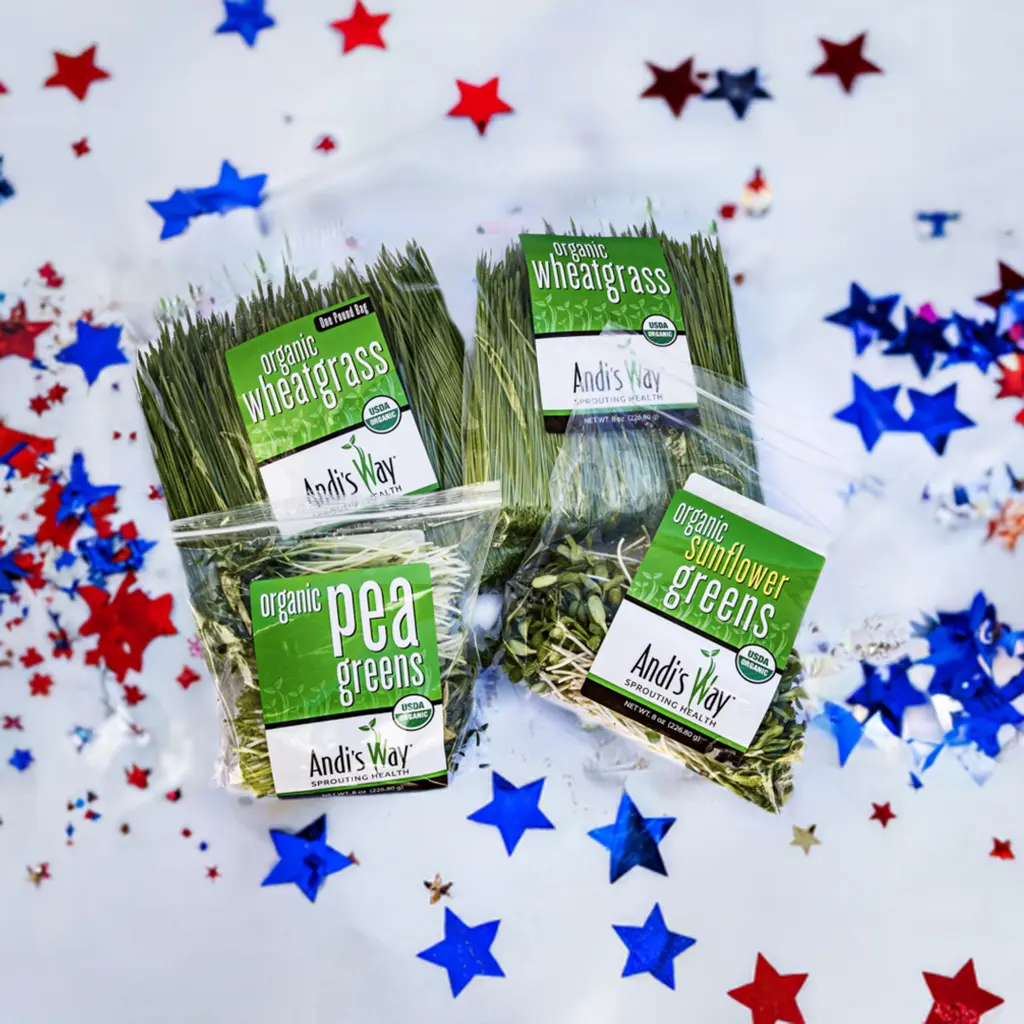
Difference between sprouts and microgreens
In order for us to understand how to care for your “sprouts”, we must first decipher if they are a true sprout. True sprouts can be identified by looking to see if there are any of the original seed or root hair attached. True sprouts are grown in a very wet humid environment. Commercially they are grown in large drums that spin adding water and then draining the water. When they are harvested they will have seed and root hair attached and are considered living. Many people refer to the items in the picture below as sprouts. However, technically these are microgreens. Microgreens are still young plants, but are harvested at their peak of nutrition, by cutting AWAY from the seed and roots. Microgreens can be grown hydroponically or in soil, but are not grown in large drums like some of the traditional sprouts.
Tips for Properly Storing Fresh Sprouts
To keep fresh sprouts nutritious, it’s crucial to store them properly. Fresh sprouts are packed with essential nutrients like vitamins, minerals, and antioxidants that are beneficial for your health. Storing them correctly helps maintain their nutritional value by preventing them from spoiling quickly. Follow proper storage methods to ensure you get the most out of your fresh sprouts and enjoy their health benefits for longer.
Factors affecting the nutritional value of sprouts
Factors such as exposure to light, temperature, and moisture levels can affect the nutrition of sprouts. Light exposure can cause nutrient loss, so storing sprouts in a dark place is ideal. Temperature is important too; keeping sprouts at a cool temperature helps retain their nutrients and slows their growth. Moisture levels play a crucial role as well - sprouts should be stored in a way that maintains their moisture without making them soggy.
Proper storage techniques for maintaining freshness of Microgreens
Keep fresh Microgreens in the original container or a ventilated plastic bag with a paper towel to absorb excess moisture. Place the paper towel down at the bottom and along sides of the bag to catch moisture. Store them in the refrigerator crisper drawer where it’s cooler. Do NOT rinse microgreens before storing them, as this creates more moisture. Wait to rinse right before use. Refresh the paper towel every few days to prevent sogginess.
Moisture control in Microgreen storage
To keep your microgreens fresh and nutrient-rich, it’s crucial to control moisture in their storage. Excess moisture can lead to mold growth, spoiling your sprouts. Here’s how you can maintain the right moisture levels to ensure the longevity of your sprouts:
- Store your sprouts in a clean container lined with a paper towel to absorb any excess moisture.
- Check your sprouts regularly for any signs of moisture buildup or mold.
- Ensure proper ventilation in the storage container to prevent condensation.
- Avoid sealing the container completely to allow for air circulation.
- Keep your sprouts in the refrigerator, as the lower temperature can help regulate moisture levels. Remember, maintaining the right moisture balance is key to preserving the nutritional quality of your fresh sprouts.
Understanding the lifespan of fresh sprouts
Fresh sprouts have a short lifespan compared to microgreens, but it does depend on the variety. They typically last 3 to 20 days when stored properly. There are many varieties of sprouts, which accounts for the large variance in shelf life. To maximize their nutritional value, it’s crucial to store them in a cool and humid (for sprouts, dry for microgreens) environment to prevent them from wilting too quickly. Remember to always rinse SPROUTS only before storing and replace any wilted or mushy sprouts promptly to keep the rest fresh.
The impact of light and temperature on sprout preservation
Light and temperature play a crucial role in preserving the nutritional value of fresh sprouts. Exposure to light can cause sprouts to lose nutrients and become bitter, so it’s best to store them in a dark place. Additionally, keeping sprouts at the right temperature helps maintain their freshness and prevents them from spoiling too quickly. Refrigerating sprouts at around 4°C (39°F) is generally recommended to prolong their shelf life and ensure you enjoy them at their best.
How to check freshness before consumption
Before consuming fresh sprouts or microgreens, it’s crucial to check their freshness to ensure they are safe to eat. Here are some simple ways to determine if your sprouts or microgreens are still good:
- Look for vibrant color: Fresh sprouts should have a vibrant green or white color, depending on the type of sprout or microgreen.
- Inspect for mold: Check for any signs of mold growth or a slimy texture, and remove from container. This can help protect the rest of the container from spoiling.
- Smell for freshness: A fresh and pleasant aroma indicates the sprouts and microgreens are not spoiled.
- Taste a sample: Taste a small portion to ensure they have a crisp and flavorful taste.
Following these steps can help preserve the shelf life of nutrient packed microgreens and sprouts.





